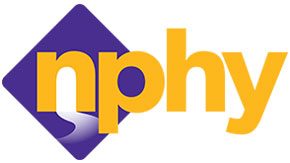News | December 15, 2016
Nevada Partnership for Homeless Youth Helps Guide Teens During Trying Times
Nevada Partnership for Homeless Youth (NPHY) began in 2000 as a group of community members fighting legal barriers that were preventing homeless youth from accessing life-saving services. Since then, NPHY has grown into one of the most comprehensive service providers for homeless youth in Nevada, bringing resources, safety and well-being to thousands of homeless youth each year.
“We only focus on helping homeless youth ages 12-21, who are unaccompanied minors where there is no parent or guardian present, a parent is not involved in their lives, and the parent has assumed no legal duties,” Arash Ghafoori, Executive Director of NPHY, said. “We get an influx at Christmas, but especially at the end of the school year. These kids don’t have a lot of options once the school year ends.”
Ghafoori says most homeless youth try to hide that they are homeless. They don’t have tattered clothing and they aren’t showing up to school looking like they slept on the street. Because of this, outreach is the most important aspect to combatting homelessness in youth. Programs are in place to meet the youth at any stage of their homelessness.
“Outreach is a three-pronged approach,” Ghafoori said. “They don’t advertise themselves so we do different forms of messaging to reach out to the youth that may not have a place to go. We do school events to get through to the kids that there is a place to go that can help them if they’re in a bad situation.”
In 2015, there were 2,232 unaccompanied homeless children and youth residing in Southern Nevada on an average night, with Nevada having the highest rate in the United States. There were also 14,598 youth enrolled in Clark County Schools during the 2015-2016 school year, with over 23,000 in the state of Nevada. Programs developed by NPHY like Safe Place, an immediate emergency service if they are in a bad situation and need to get out; Street Outreach, a mobile team out looking for youth that may need help; Emergency Shelter, that will go from 4 to 8 beds, with the help of a grant from Las Vegas Sands in 2017 where youth can be housed for 14 days; Operation Go Home, which is a family reunification program; and the Drop-In Center, designed to look like a real home, where youths have a kitchen with free meals, can get free haircuts, a living room with computers, music room, art room and a closet stocked with clean clothes all make it easier to ask for help.
“The drop-in center is one of the most enriched in the United States,” he said. “They can use the address and phone number for school or if they’re applying for jobs. It’s open to them for whatever they need and it’s completely voluntary. They must meet with a case manager when they come and there is no hate rule, but they’re here if they want to be. They get here purely from our outreach program and that’s why outreach is so important.”
With over 400 Safe Places in the Las Vegas Valley that include all Terrible Herbst gas stations and any Clark County fire station, youth can get out of trouble when a situation seems to be out of control. From these locations, they will be taken home, to a NPHY emergency center, other shelter or the hospital, depending on each individual situation. With no socio-economic discrimination to youth homelessness, they come from different types of homes, areas, and races.
“The misconceptions are that they are punks or are rebellious,” Ghafoori said. “They don’t know what independence is supposed to be like, they haven’t learned that yet, and they can become homeless in an instant. It’s unpredicted and sudden. They lack the skills to be self-sufficient because they’ve never had to be. Homelessness happens at a time in their life when they are supposed to be learning these things. Once something happens, they’re worried about the next couple of hours and they go into survival mode. One of three will engage in survival sex and prostitution. Some will delve into substance abuse. They worry about what they are going to eat and where they’re going to sleep.”
Education is the key area that homeless youth hang onto and want to continue. Circumstances at home are bad if they would rather live on the streets or with friends on a couch, but they lose access to education and lose outlets that they once had. Education also affects the graduation rate. With the services of NPHY, youth can reenter their school and also learn to be self-sufficient. With independent-living apartments throughout the city, NPHY has scattered sites so there are locations available near their schools and work. Making it geographically convenient, the youth are also given food cards to learn how to buy and make their own food and bus passes to teach them responsibility to learn the routes to make appointments, go to school and go to work.
“We try to instill forward-oriented goals by providing as many resources as possible. We try to establish a road to self-sufficiency. They just need love, support, security and a safety net. We want to create an enriching, positive environment. They need something to aspire to. It’s wonderful that Las Vegas Sands sees this as an issue and is bringing attention to it. They are leading the community by example.”
